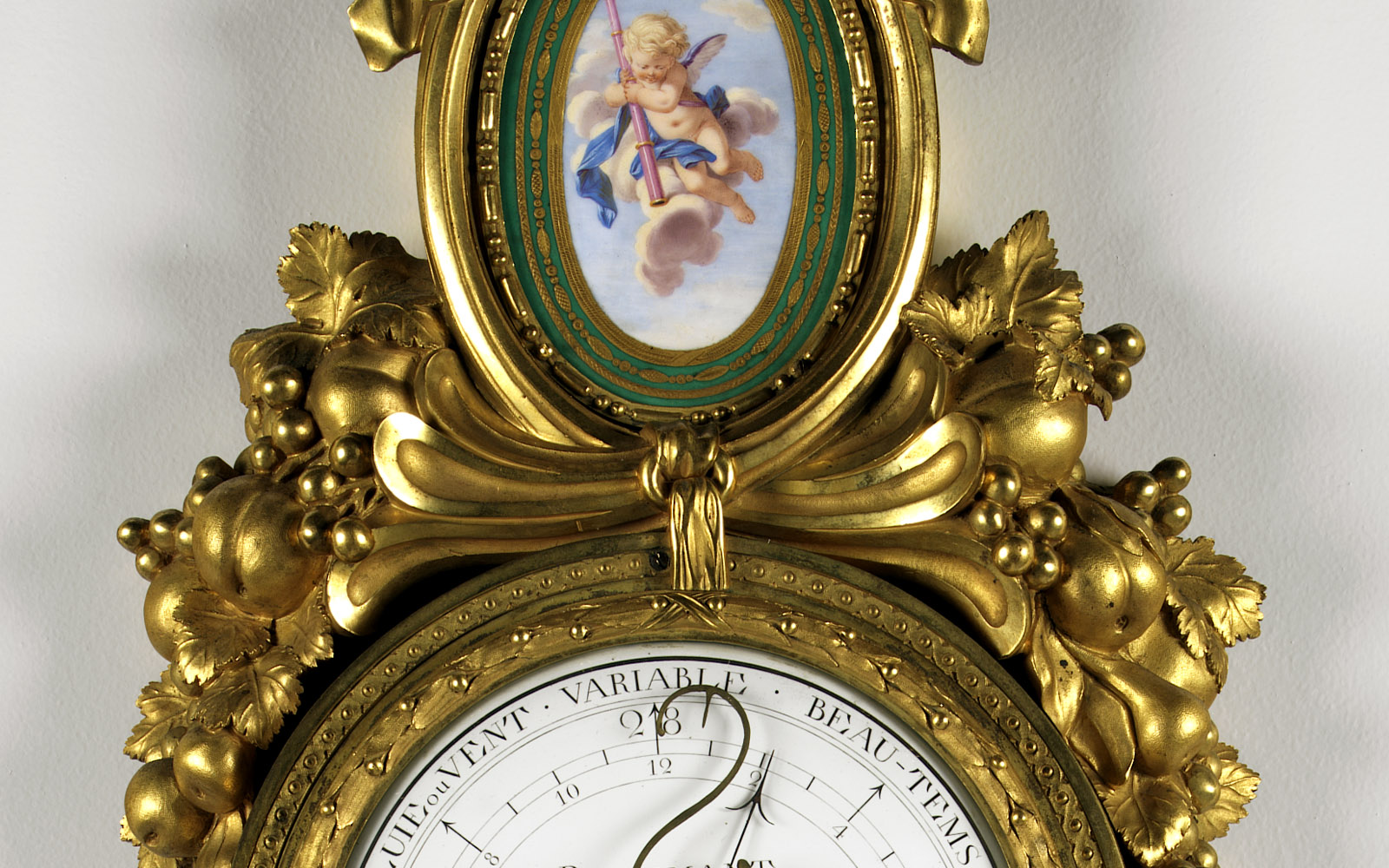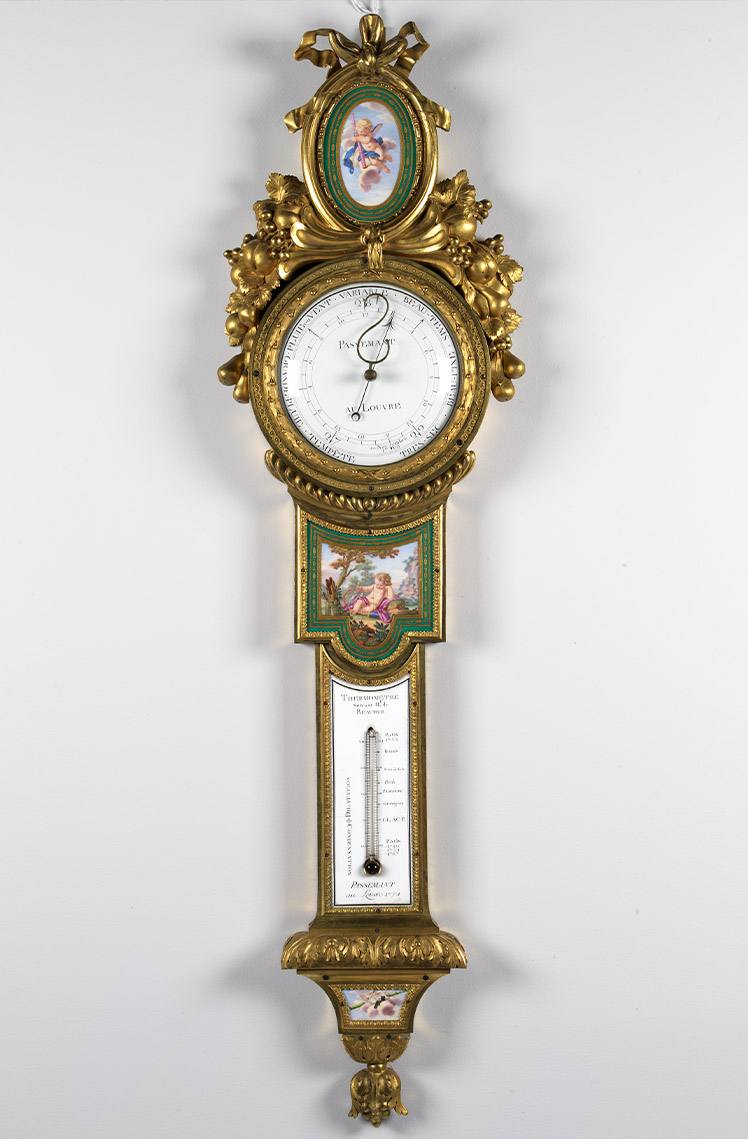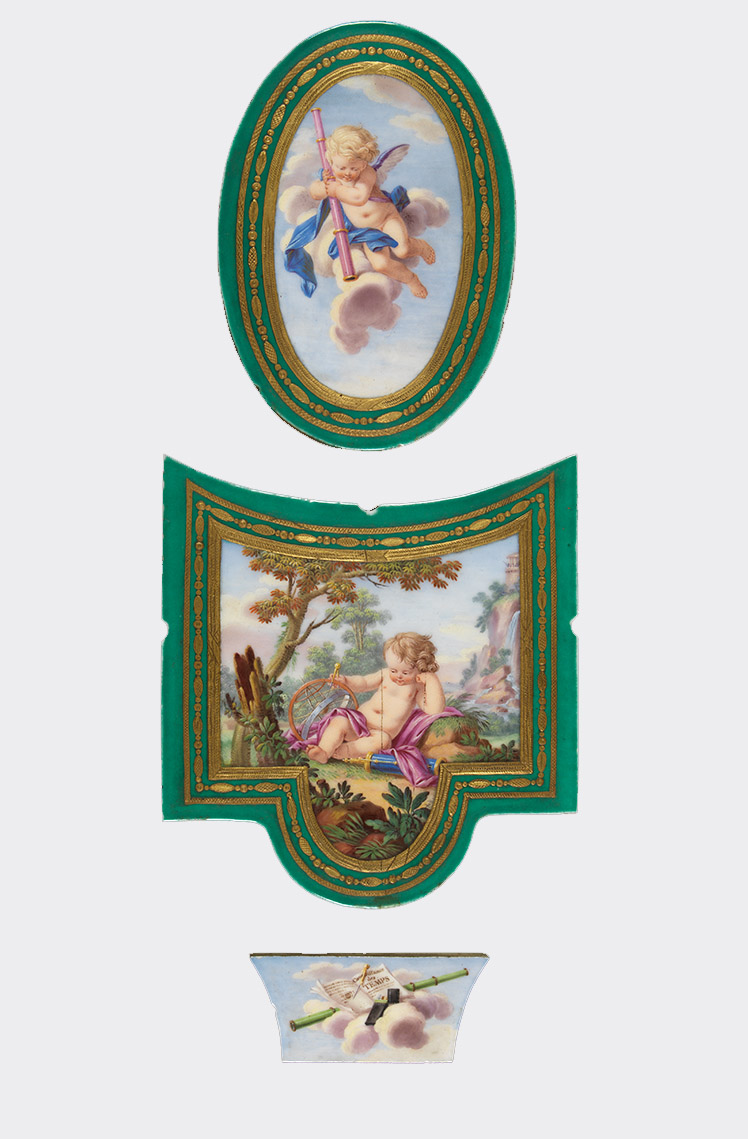Barometer-thermometer

Measuring and precision instruments were highly sought after in the 18th century. They were the product of scientific advances made at a time when trust in man’s intellectual abilities and the power of reason was particularly high. The trend did not pass the king and the court by: these instruments were used to decorate the salons at the court and came to be viewed as works of art.
This barometer/thermometer was designed by Claude-Siméon Passemant, one of the greatest inventors and makers of scientific instruments of the era. Passement served as engineer to the king from his workshop at the Louvre throughout Louis XV’s reign. He also made the barometer/thermometer that belonged to Madame Du Barry, the king’s favourite – very similar to the one presented here – who bought it from Simon Poirier, a famous art dealer. It appears that it was Poirier himself, always attentive to new trends and to his clients’ tastes, who encouraged the production of this type of objects.
The two instruments, barometer and thermometer, are inlaid into a chiselled, gilded bronze box decorated with ribbons, flowers, fruits, garlands and scrolls. The decoration also included three porcelain plaques created by Charles-Nicolas Dodin, a prominent figurine painter at the Sèvres Manufactory, who produced plaques to decorate furniture and scientific instruments as well as dinner services and vases. In 1776, Poirer purchased several porcelain plaques from Sèvres for decorating barometers. Dodin also made the porcelain plaques for Madame Du Barry’s barometer/thermometer, which is currently on display at the Metropolitan Museum of Art in New York.


The three plaques feature motifs related to the object’s function. The upper, oval plaque has a green reserve with a gold trim and a cupid on a cloud holding an eyepiece in the centre. In the central plaque, with the same trim, a child clutches a compass and an armillary sphere amid a bucolic landscape. On the lower, smaller plaque without a reserve, a book and several different scientific instruments lie on top of a cloud. The book is opened at a page that reads Connaissance des Temps.
The enamelled faces of the two instruments show information about the weather. The thermometer features an inscription that reads Thérmomètre suivant M de Reaumur, suggesting that the scale used was developed by French scientist de Reaumur, who invented a thermometer with a scale divided into 80 degrees in 1731, based on the freezing and boiling point of water. This type of thermometer was widely used in Europe at that time.
Clara Serra
Curator at the Calouste Gulbenkian Museum